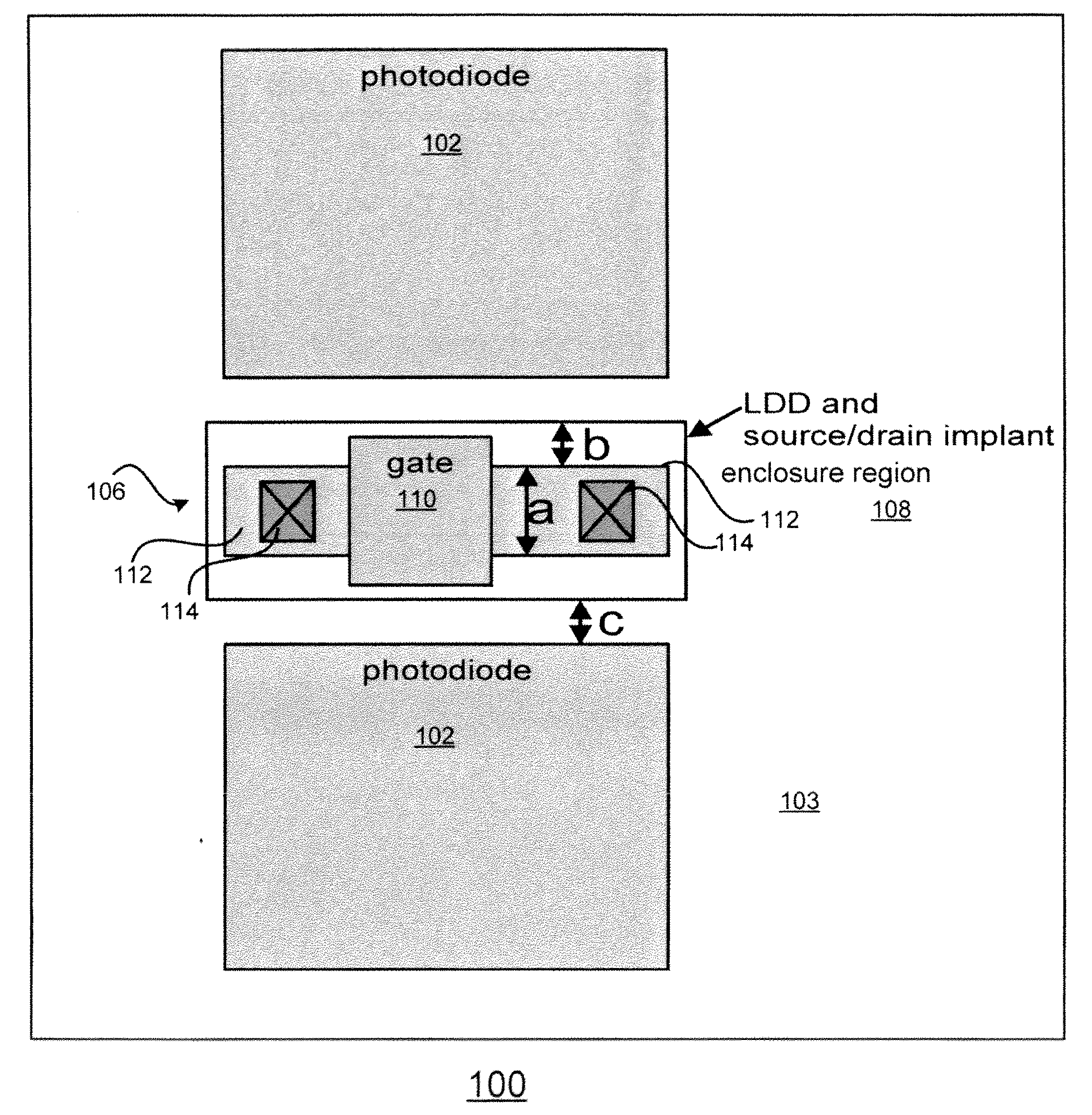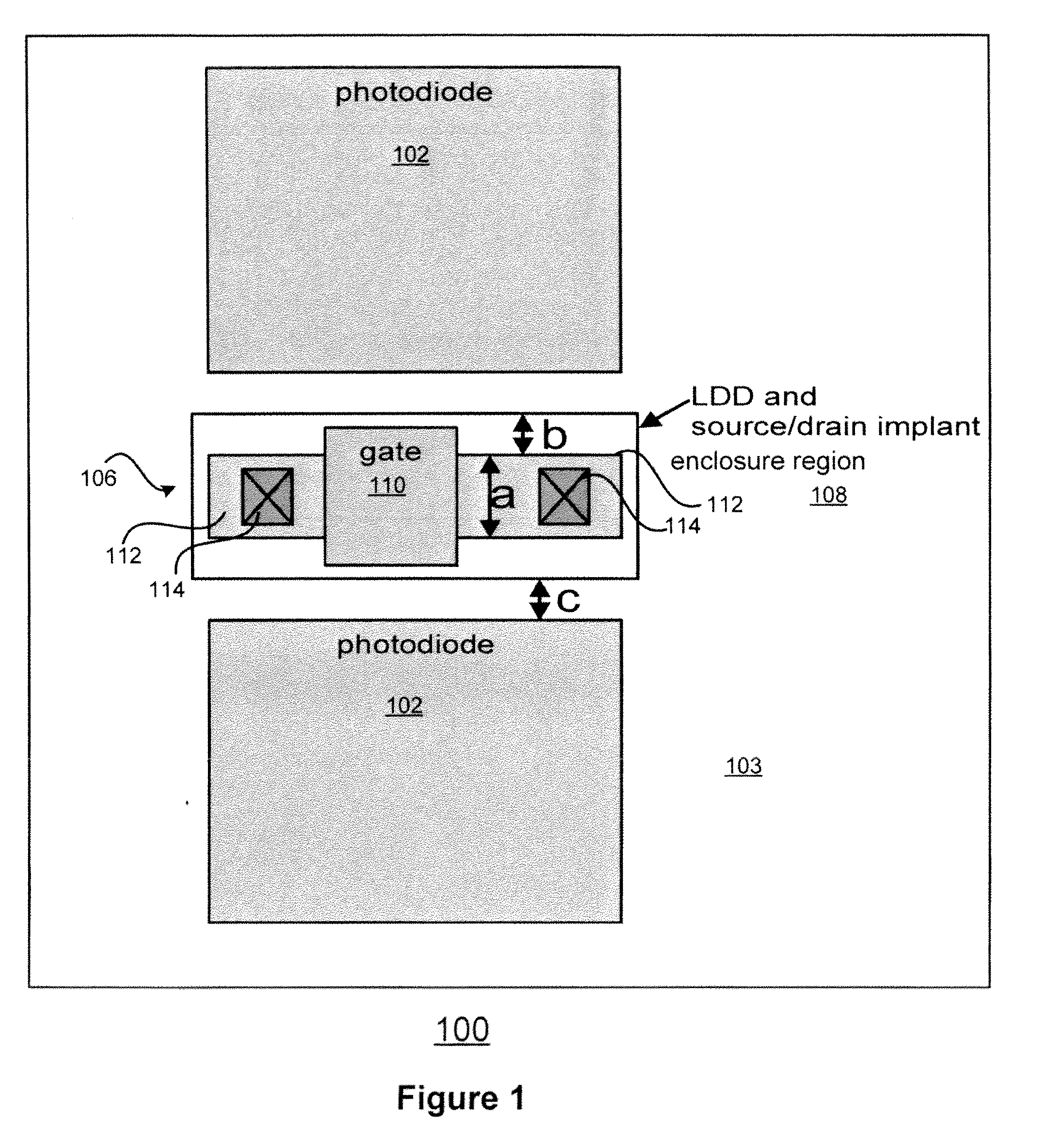Lightly-doped drains (LDD) of image sensor transistors using selective epitaxy
a technology of image sensor and transistor, applied in the field of image sensors, can solve the problems of low sensitivity, insufficient light collection of photosensitive elements, and limitations of conventional image sensors
- Summary
- Abstract
- Description
- Claims
- Application Information
AI Technical Summary
Benefits of technology
Problems solved by technology
Method used
Image
Examples
Embodiment Construction
[0018]According to embodiments of the present invention, an image sensor comprises an array of pixels including pixel transistors disposed in or on a semiconductor, e.g., silicon, substrate. In a departure from conventional methods, instead of having LDD regions of the pixel transistors implanted with silicon dopants using a mask, doped silicon may be epitaxially grown in the LDD regions to appropriately dope the LDD regions. Alternatively, a doped sacrificial blanket film may be used to form LDD regions by diffusing the dopants from the film into the LDD regions. If peripheral transistors are disposed on the substrate, a protective oxide is disposed on the peripheral transistors to prevent silicon from being grown on the peripheral transistors during the epitaxial growth process. For some embodiments, the doped silicon may be n-doped silicon. For other embodiments, the doped silicon may be p-doped silicon.
[0019]There are advantages to forming the LDD areas using epitaxial growth ra...
PUM
 Login to View More
Login to View More Abstract
Description
Claims
Application Information
 Login to View More
Login to View More - R&D
- Intellectual Property
- Life Sciences
- Materials
- Tech Scout
- Unparalleled Data Quality
- Higher Quality Content
- 60% Fewer Hallucinations
Browse by: Latest US Patents, China's latest patents, Technical Efficacy Thesaurus, Application Domain, Technology Topic, Popular Technical Reports.
© 2025 PatSnap. All rights reserved.Legal|Privacy policy|Modern Slavery Act Transparency Statement|Sitemap|About US| Contact US: help@patsnap.com



